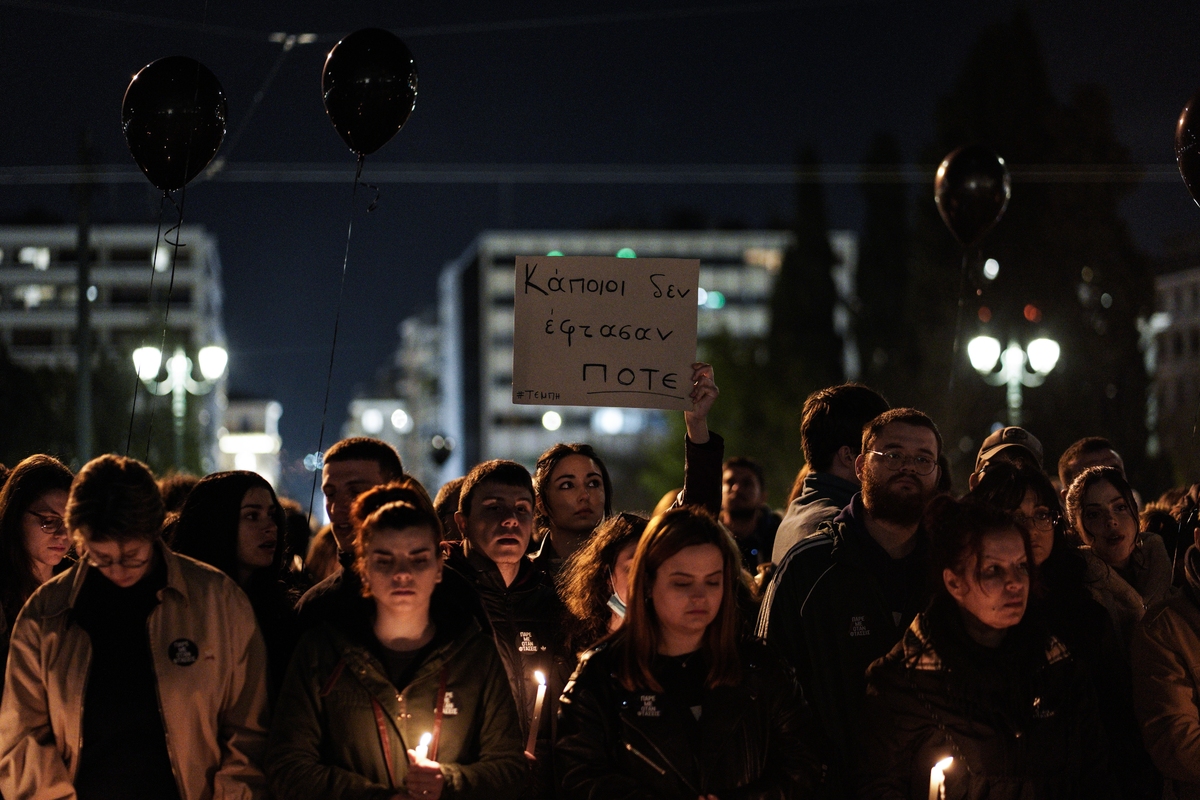
Ownership of Greece’s railway system
Before outlining the timeline of the Tempe disaster, it is important to understand the structure of Greece’s railway system:
- OSE (Greek Railways Organisation) is the public entity responsible for maintaining Greece’s railway infrastructure.
- TRAINOSE, a subsidiary of OSE, was responsible for railway transport services until 2017.
- In 2017, as part of Greece’s financial commitments to its international lenders, TRAINOSE was sold to the Italian state-owned company Ferrovie dello Stato Italiane (FSI), which operates on a private-sector basis.
- In 2021, TRAINOSE was renamed Hellenic Train, and it continues to operate Greece’s railway under Italian state ownership, while OSE remains public and responsible for infrastructure maintenance.
The Tempe train disaster
On the evening of 28 February 2023, the Hellenic Train Intercity 62 passenger train, carrying 350 passengers—mostly students—departed from Athens bound for Thessaloniki. For 12 minutes, it was running on the wrong track before colliding head-on with a freight train of the same company at 23:22 near Tempe.
A massive explosion followed. 57 people were killed, and dozens were injured. Survivors later described the state response as inadequate, with few ambulances, medical personnel, or firefighters arriving at the scene in time. Many survivors stated that no rescuers were initially sent at all.
At 11:20 a.m. on 1 March, the Larissa stationmaster was arrested, and government officials, including Prime Minister Kyriakos Mitsotakis, quickly blamed him for the disaster. The next day, from the crash site, Mitsotakis vowed to uncover the causes of the tragedy and declared three days of national mourning.
On the same day, Minister of Infrastructure and Transport Kostas Karamanlis resigned, despite having previously dismissed concerns over railway safety, stating:
“It is shameful, and you should be ashamed for raising safety concerns.”
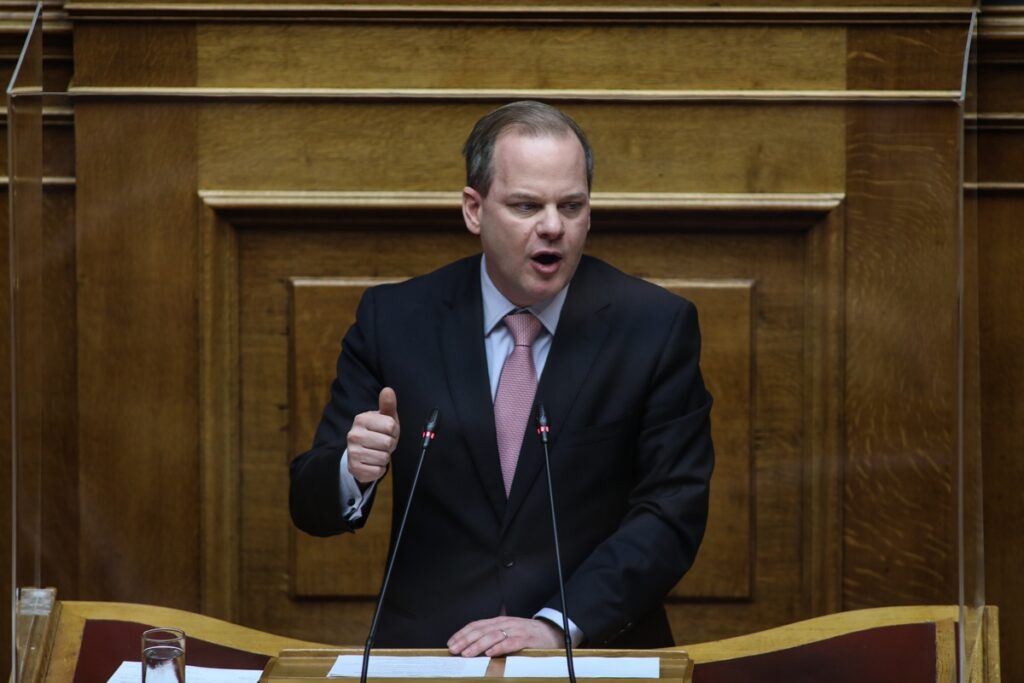
The aftermath: Political reactions and evidence of neglected safety systems
In the hours following the crash, authorities began removing the wreckage.
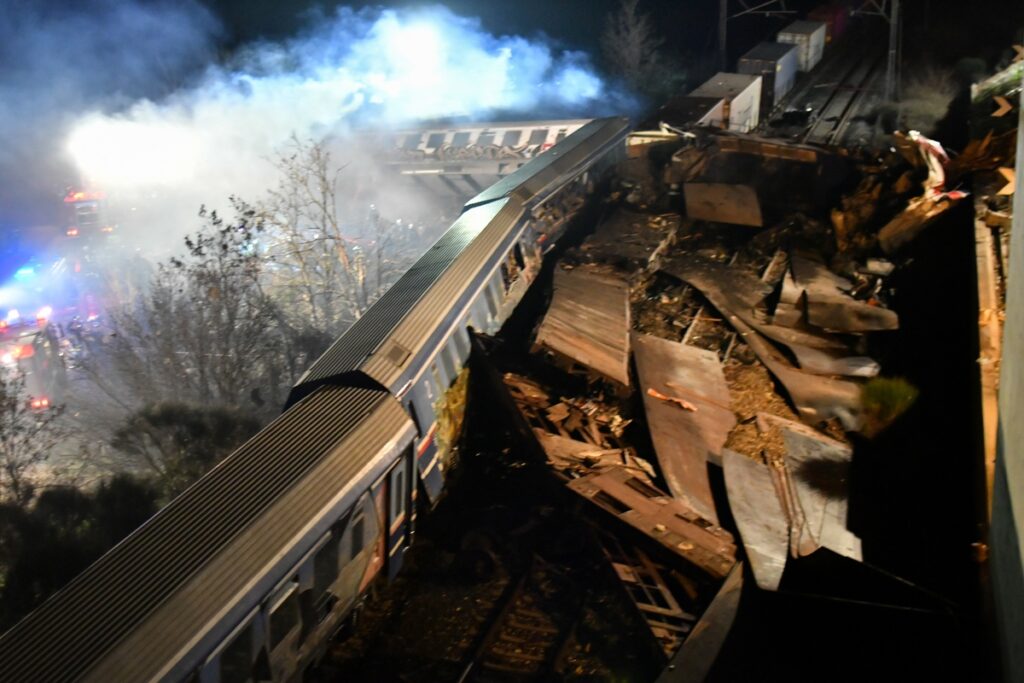
On 3 March 2023, an on-site inspection was conducted by Deputy Minister to the Prime Minister Christos Triantopoulos, Secretary General of Transport Ioannis Xifaras, and then-Governor of Thessaly Kostas Agorastos. It was at this point that the decision was made to cover the site—removing hundreds of cubic meters of soil.
Meanwhile, train drivers’ unions once again denounced the total absence of safety systems, citing in particular the failure to implement Contract 717, which was meant to upgrade Greece’s railway signalling and remote control system.
- Contract 717 was signed in 2014, with a €41 million budget and a two-year deadline for completion.
- Experts have stressed that had the remote control system been operational, the collision would have been prevented.
The failure to implement safety reforms despite repeated warnings and formal legal notices from railway workers fuelled nationwide protests under the slogan “Privatisations kill“.
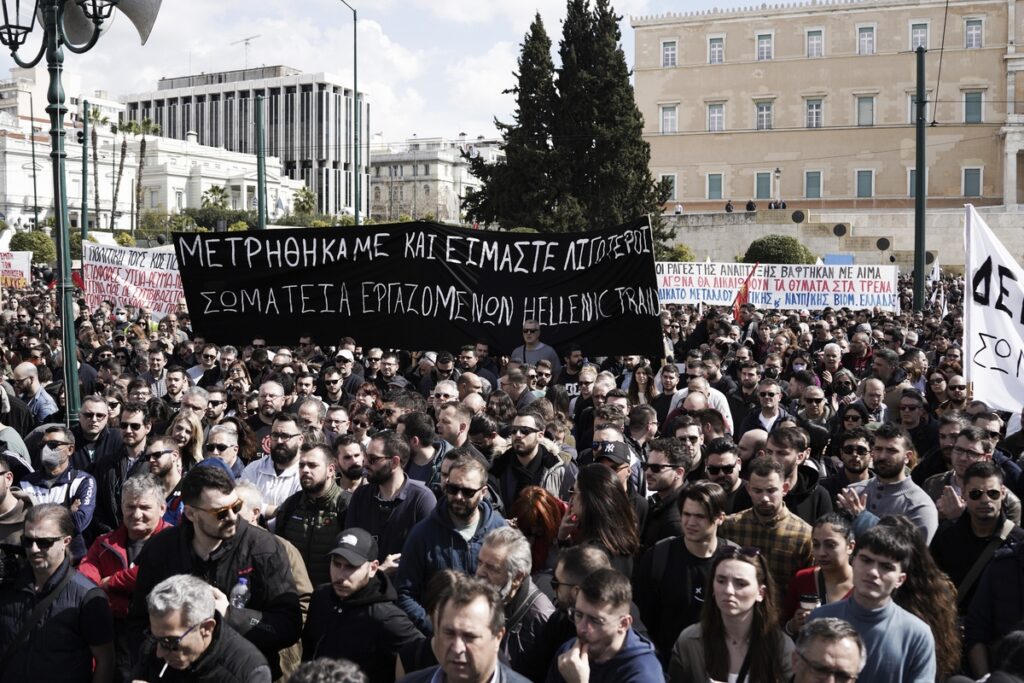
Government response and ongoing investigations
In May 2023, New Democracy won re-election with 41% of the vote, and despite his resignation, Kostas Karamanlis was re-elected as an MP. However, he did not take up a ministerial position in the new government.
In June 2023, the European Public Prosecutor’s Office (EPPO) called on the Greek government to investigate possible criminal liability for two former transport ministers. By December 2023, this resulted in criminal charges against 23 non-political figures for fraud and breach of trust related to Contract 717.
Meanwhile, in August 2023, the Tempe Accident Victims Association filed a formal complaint against Governor Agorastos, questioning his role in the covering of the crash site and removal of soil. In February 2024, the Larissa District Court Prosecutor’s Office charged Agorastos with breach of duty, following a lawsuit filed by victims’ relatives.
The Parliamentary Inquiry: Allegations of a cover-up
In November 2023, a Parliamentary Inquiry Committee was established to investigate the Tempe disaster, chaired by New Democracy MP Dimitris Markopoulos. The committee faced strong criticism over:
- Blocking key witnesses, such as OSE train drivers’ union president Kostas Genidounias, who had repeatedly warned of an impending fatal accident.
- Excluding the former CEO of TRAINOSE, Philippos Tsalidis, who had warned of severe safety risks in his resignation letter.
On 22 February 2024, Tsalidis testified before the Larissa investigator, stating that former Minister Karamanlis was fully aware of the railway’s deteriorating condition. He confirmed that:
- Trains were not monitored in real-time.
- There was no visible tracking of train movement per direction.
- The GSM-R emergency communication system was nonfunctional.
- Despite the installation of the ETCS (European Train Control System), it remained inactive due to the lack of a complete signalling system.
On 10 March 2024, the Parliamentary Inquiry Committee concluded its work with the New Democracy majority adopting a report that blamed “human error”, stating that repeated violations of the General Traffic Regulations caused the accident. The report insisted that there had been no attempt to cover up evidence.
A year later, in January 2025, in the wake of mass protests, Prime Minister Mitsotakis conceded in a televised interview that the inquiry had been mishandled, saying:
“The Tempe Inquiry Committee was not the Parliament’s finest moment.”

New evidence and growing public outrage
Public anger reignited in early 2025 following:
- The conclusion of forensic expert Vasilis Kokotsakis, which, by synchronising audio and video recordings from the crash, suggested that many victims survived the initial impact but died in the fire.
- The discovery of flammable chemicals—including xylene, toluene, and benzene—in samples tested by the State General Chemistry Laboratory contradicts the government’s claim that the fire was caused by transformer cooling oils.
- A report from Ghent University concluded that at least 3.5 tons of flammable liquids were in a tank on the freight train.
- A report from MEGA revealed that police officers tasked with securing the crash site testified that they had faced pressure from government officials to authorise the cover-up of the area.
On 26 January 2025, some of the largest demonstrations in recent Greek history took place, with hundreds of thousands protesting across the country under the slogan:
“I Have No Oxygen”—a phrase from the last words recorded in audio files recovered from the crash site.
On 28 February 2025, marking two years since the disaster, another nationwide strike and mass protest are organised by victims’ relatives, with police announcing ‘draconian’ measures, including undercover officers within the crowds.
Ongoing legal battles and political fallout
In February 2025, under pressure from mass protests, the government reluctantly agreed to an investigation into Deputy Minister Christos Triantopoulos, following allegations that he had ordered the covering of the crash site with soil. Police officers also testified that they were pressured by government officials to approve site demolition.
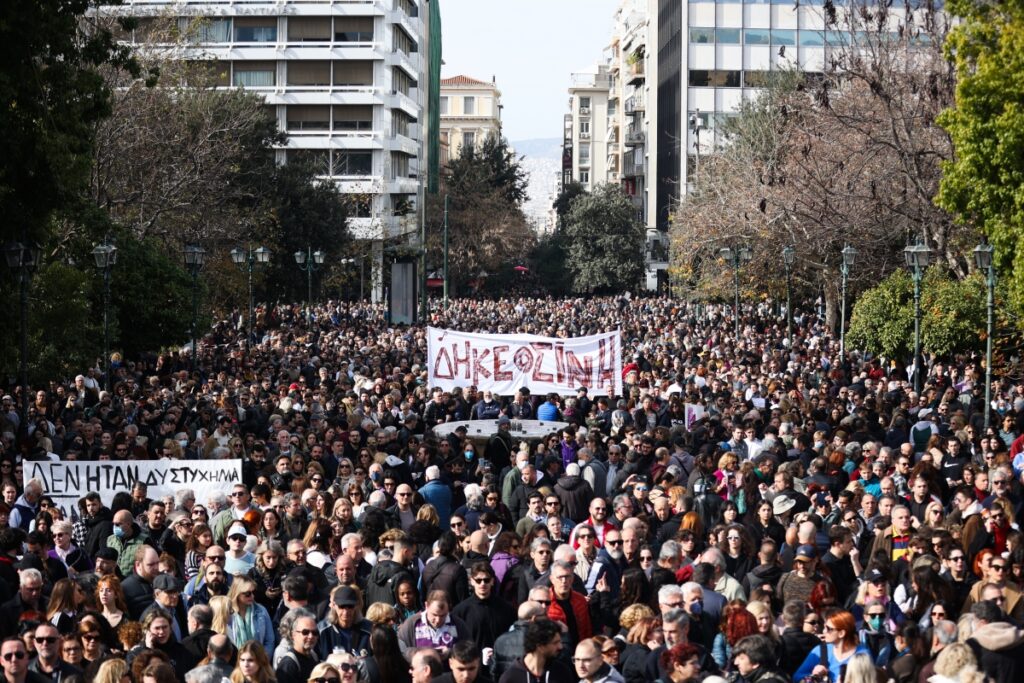
On 7 February 2025, a security company provided video evidence to the Tempe investigator, purportedly showing the freight train minutes before the crash. However, forensic analysts stated they could not verify the video’s authenticity.
Despite the government’s attempts to dismiss allegations of a cover-up, public distrust remains high. In a televised interview on 29 January 2025, Mitsotakis walked back his earlier dismissal of “conspiracy theories“, stating:
“If I knew then what I know today, I wouldn’t have said that.”
However, he refused to admit fault and ruled out resignation.
With new evidence still emerging and public pressure intensifying, including a nationwide strike and mass rallies planned for the two-year anniversary on the 28th of February, the fight for justice for the victims of Tempe remains one of the defining issues in Greece today. ThePressProject will continue to report on the latest developments—those interested can follow our dedicated Tempe news category for ongoing coverage.
______________________________________________
Are you seeking news from Greece presented from a progressive, non-mainstream perspective? Subscribe monthly or annually to support TPP International in delivering independent reporting in English. Don’t let Greek progressive voices fade.
Make sure to reference “TPP International” and your order number as the reason for payment.